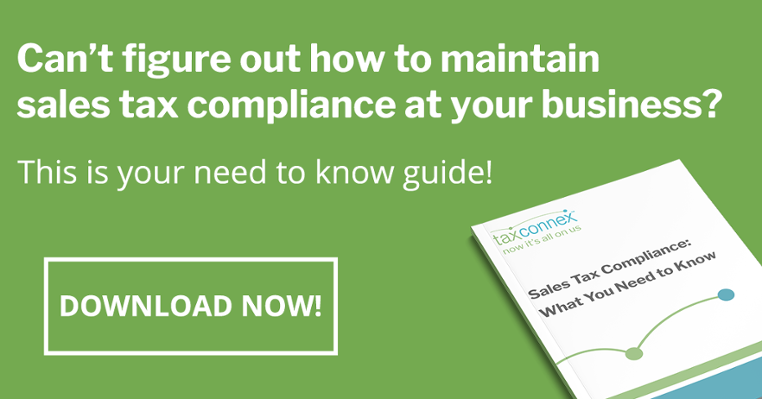Sales Tax Scaries 4: Nexus and Taxability
When Sales Tax Creeps Up on You
Ever notice how the first characters in every horror movie never...


It has been two years since the US Supreme Court passed the Wayfair decision which paved the way for states to enact economic nexus rules. At this point, the majority of finance professionals understand the need to maintain sales & use tax compliance. Most businesses have some type of process in place although it may not be comprehensive enough. What do you do when you discover you are out of compliance in some states? Or you acquire a business that has done very little to manage sales and use tax compliance?
In this blog, we’ll outline 5 steps that will put you on the right track to have your business prepped to maintain sales tax compliance.
1. Complete a Nexus Review
Nexus is determined by a physical presence OR economic presence within a state or jurisdiction. Nexus can be an evolving issue for many businesses. As your team and business grows, you could also be expanding your nexus footprint. Having a complete nexus review to understand your current footprint is key to starting the process towards compliance. You must also understand that this is not a one-time project. It is important to monitor nexus thresholds throughout the year to be sure you have not triggered nexus in new states.
2. Understand your exposure
Sales tax is meant to be a pass-through tax and thus one that should have minimal impact on a company’s bottom line. But, if you fail to collect and remit the applicable sales tax, under audit a jurisdiction will assess the tax due + a penalty + interest. This then becomes a bottom line hit to your business unless you can recoup from your customers.
If your business has previously established nexus and has not been collecting sales tax, you must determine your prior period exposure. The analysis of prior period exposure should encompass all periods where the company had nexus and taxable sales but wasn’t in compliance. For many states there is a 7-year look back period that needs to be addressed.
To gain an estimate of your liability/risk, you can use our free calculator tool, but to get the most accurate answer it is best to talk to a sales tax expert.
3. Understand if a VDA is right for your business.
A Voluntary Disclosure Agreement (VDA) is a legal means for taxpayers to self-report back taxes owed for income, sales, property, and other tax types. In exchange for voluntarily reporting the tax due, states generally grant a waiver of penalty and a limited look-back period (generally three to four years). VDAs can be effective tools to mitigate prior period sales tax exposure, but aren’t necessarily the best option for everyone.
Do your research and determine if a VDA is the best option before moving forward with the next step.
4. Register with a state to begin collecting and remitting sales tax.
Before you start collecting and remitting sales tax you need to register with the applicable jurisdictions. Through this registration process, the jurisdiction grants a license to collect the sales tax on their behalf. Registering to collect and remit sales tax generally requires submitting basic business contact information (though this can vary state to state) including a list of corporate officers, their social security numbers, and phone numbers.
5. Set up your process to collect, file and remit sales & use tax in your registered states.
This last step is really made up of several other steps. Maintaining a sales tax compliance process isn’t a one and done project. Whether you manage the process in-house, work with a technology vendor or outsource completely, there are many decisions and pieces to the process that need to be understood.
How will you calculate sales tax? Who will manage monitoring your nexus footprint? Who will maintain your tax calendar and monitor mail for notices? Talking to a CPA or working with an outsourced sales tax compliance provider can alleviate the burden considerably when managing this on-going process.
Keep reading more about how to setup and maintain your sales & use tax compliance in our eBook – Sales Tax Compliance: Your Need-to-Know Guide.
If you’re looking for some help along the way, contact TaxConnex We have a team of experts to help you navigate the many pitfalls of business sales tax compliance.

Ever notice how the first characters in every horror movie never...
Copyright © 2025 TaxConnex, LLC